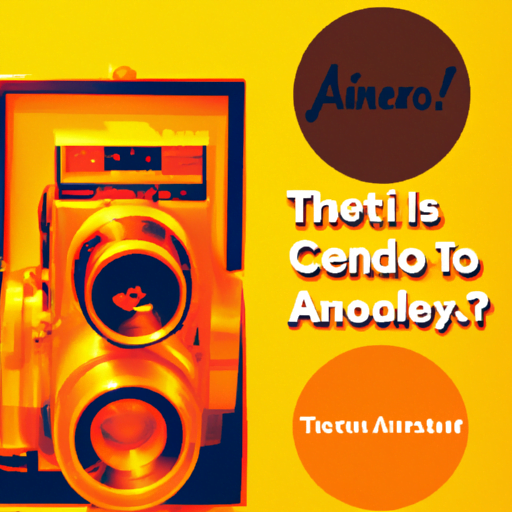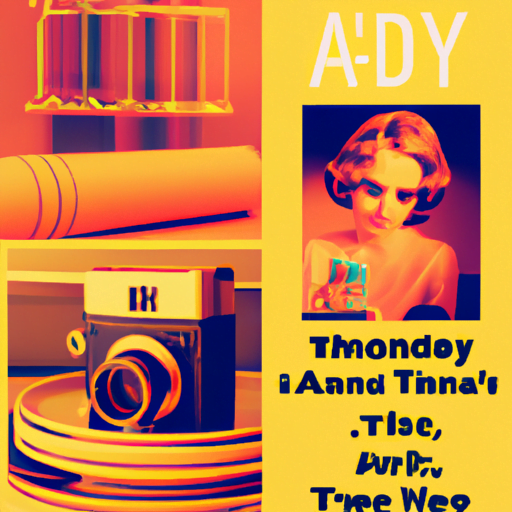
-
Table of Contents
- Exploring Retro Typography: Nostalgic Design Trends
- The History of Retro Typography
- The Impact of Retro Typography on Design
- Examples of Retro Typography in Design
- Example 1: The Great Gatsby Movie Poster
- Example 2: Instagram’s Logo Redesign
- Example 3: Vintage-Inspired Packaging
- The Future of Retro Typography
- Summary
Exploring Retro Typography: Nostalgic Design Trends

Retro typography has made a significant comeback in recent years, captivating designers and consumers alike with its nostalgic charm. This design trend draws inspiration from the typography styles of the past, evoking a sense of nostalgia and familiarity. In this article, we will explore the world of retro typography, its history, its impact on design, and how it continues to shape the visual landscape today.
The History of Retro Typography
Retro typography finds its roots in the early 20th century, when various typography styles emerged and flourished. From the Art Deco movement of the 1920s to the psychedelic typography of the 1960s, each era had its unique typographic characteristics that continue to inspire designers today.
One notable typography style from the mid-20th century is the Mid-Century Modern typography. This style, characterized by clean lines, geometric shapes, and sans-serif typefaces, became popular during the post-World War II era. It reflected the optimism and simplicity of the time and is still widely used in retro-inspired designs today.
Another influential era in retro typography is the 1970s and 1980s, known for its bold and vibrant designs. This period saw the rise of disco culture, punk rock, and the emergence of personal computers. The typography of this era often featured bold, chunky letterforms, neon colors, and futuristic elements.
The Impact of Retro Typography on Design
Retro typography has had a profound impact on the design industry, influencing various fields such as advertising, branding, and web design. Its ability to evoke nostalgia and create a sense of familiarity makes it a powerful tool for connecting with audiences.
One area where retro typography has made a significant impact is in advertising. Brands often use retro-inspired typography to create a sense of authenticity and to tap into consumers’ emotional connection with the past. By incorporating retro typography into their campaigns, brands can evoke a sense of nostalgia and create a memorable visual identity.
For example, Coca-Cola, a brand known for its iconic retro logo, has successfully used retro typography in its advertising campaigns. The brand’s vintage-inspired typography evokes a sense of nostalgia and reinforces its long-standing heritage.
In the world of branding, retro typography can help establish a unique and memorable visual identity. By using typography styles from a specific era, brands can differentiate themselves from their competitors and create a strong brand personality.
One brand that has effectively used retro typography in its branding is Jack Daniel’s. The whiskey brand’s logo, featuring a vintage-inspired serif typeface, has become synonymous with its brand identity. The retro typography not only reflects the brand’s rich history but also appeals to consumers who appreciate the authenticity and craftsmanship associated with the brand.
In web design, retro typography can add a touch of nostalgia and personality to a website. It can help create a unique user experience and make a website stand out from the crowd. Retro-inspired typefaces, combined with modern design elements, can create a visually appealing and engaging website.
Examples of Retro Typography in Design
Let’s take a look at some examples of retro typography in design to further understand its impact and versatility:
Example 1: The Great Gatsby Movie Poster
The movie poster for “The Great Gatsby” is a perfect example of how retro typography can transport viewers to a specific era. The poster features Art Deco-inspired typography, with elegant and geometric letterforms. The retro typography sets the tone for the movie and captures the essence of the 1920s.
Example 2: Instagram’s Logo Redesign
In 2016, Instagram underwent a logo redesign that incorporated retro-inspired typography. The new logo features a simplified camera icon and a custom-designed sans-serif typeface. The retro typography adds a sense of nostalgia to the logo while maintaining a modern and clean aesthetic.
Example 3: Vintage-Inspired Packaging
Many brands use retro typography in their packaging design to create a vintage look and feel. For example, Pabst Blue Ribbon, a popular beer brand, uses retro-inspired typography on its cans and bottles. The typography reflects the brand’s long history and appeals to consumers who appreciate the nostalgia associated with the brand.
The Future of Retro Typography
Retro typography continues to be a popular design trend, and its influence shows no signs of slowing down. As technology advances and design trends evolve, retro typography will likely adapt and incorporate new elements while still maintaining its nostalgic appeal.
With the rise of vintage and retro aesthetics in popular culture, retro typography will continue to be embraced by designers and consumers alike. Its ability to evoke emotions and create a sense of familiarity makes it a timeless design trend that will always have a place in the visual landscape.
Summary
Retro typography is a powerful design trend that draws inspiration from typography styles of the past. From the clean lines of Mid-Century Modern typography to the bold and vibrant designs of the 1970s and 1980s, retro typography has left a lasting impact on the design industry.
Its ability to evoke nostalgia and create a sense of familiarity makes it a valuable tool for connecting with audiences. Retro typography has been successfully used in advertising, branding, and web design to create authentic and memorable experiences.
As technology advances, retro typography will continue to evolve and adapt, incorporating new elements while still maintaining its nostalgic appeal. With its timeless charm, retro typography will always have a place in the visual landscape, captivating designers and consumers for years to come.
